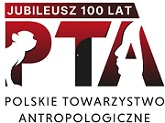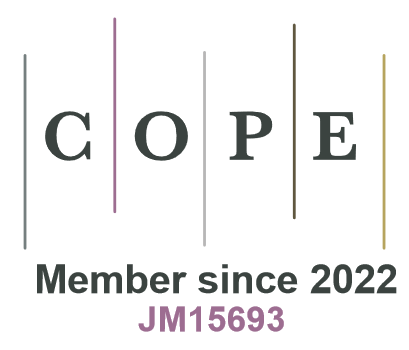Sex estimation of upper long bones by selected measurements in a Radom (Poland) population from the 18th and 19th centuries AD
DOI:
https://doi.org/10.1515/anre-2017-0019Keywords:
bioarchaeology, sex estimation, upper extremities long bonesAbstract
Several studies have shown that sex estimation methods based on measurements of the skeleton are specific to populations. Metric traits of the upper long bones have been reported as reliable indicators of sex. This study was designed to determine whether the four long bones can be used for the sex estimation of an historical skeletal population from Radom (Poland). The material used consists of the bones of 169 adult individuals (including 103 males and 66 females) from the 18th and 19th centuries. Twelve measurements were recovered from clavicle, humerus, radius and ulna. The initial comparison of males and females indicated significant differences in all measurements (p < 0.0001). The accuracy of sex estimation ranged from 68% to 84%. The best predictor for sex estimation of all the measurements in Radom’s population was the maximum length of the radius (84%), and the ulna (83%), and the vertical diameter of the humeral head (83%). The Generalized Linear Model (GLM) detected the strongest significant relationship between referential sex and the vertical diameter of the humeral head (p < 0.0001), followed by the maximal length of the ulna (p = 0.0117). In other measurements of the upper long bones, GLM did not detect statistically significant differences.
Downloads
References
Akhlaghi M, Moradi B, Hajibeygi M. 2012. Sex determination using anthropometric dimensions of the clavicle in Iranian population. J Forensic Leg Med 19:381–85.
View in Google Scholar
Albanese J. 2013. A method for estimating sex using the clavicle, humerus, radius, and ulna. J Forensic Sci 58(6):1413–19.
View in Google Scholar
Asala SA, Bidmos MA, Dayal MR. 2004. Discriminant function sexing of fragmentary femur of South African blacks. Forensic Sci Int 145(1):25–9.
View in Google Scholar
Barrier IL, L’Abbé EN. 2008. Sex determination from the radius and ulna in a modern South African sample. Forensic Sci Int 179:1–7.
View in Google Scholar
Bass WM. 2005. Human osteology: a laboratory and field manual. Columbia, MO: Missouri Archaeological Society.
View in Google Scholar
Bašić Ž, Anterić I, Vilović K, Petaros A, Bosnar A, Madžar B, et al. 2013. Sex determination in skeletal remains from the medieval Eastern Adriatic coast – discriminant function analysis of humeri. Croat Med J 54:272–78.
View in Google Scholar
Bergmann P, Goździewski S, Weolon Z. 1961. Investigation into the asymmetry of arm bones in man. Materiały i Prace Antropologiczne. 59:87–98.
View in Google Scholar
Bergmann P, Goździewski S, Weolon Z. 1962. Sexual dimorphism in arm bones. Materiały i Prace Antropologiczne 59:99–106.
View in Google Scholar
Brooks ST, Suchey JM. 1990. Skeletal age determination based on the os pubis: a comparison of the Acsádi-Nemeskéri and Suchey-Brooks methods. Hum Evol 5:227–38.
View in Google Scholar
Bruzek J, Murail P. 2006. Methodology and reliability of sex determination from the skeleton. In: A Schmitt, E Cuhna, J Pinheiro, editors. Forensic Anthropology and Medicine, Complementary Sciences From Recovery to Cause of Death. New Jersey: Humana Press. 225–42.
View in Google Scholar
Buikstra J, Ubelaker DH. 1994. Standards for Data Collection from Human Skeletal Remains. Fayetteville, Arkansas Archaeological Survey.
View in Google Scholar
Byers SN. 2002. Introduction to forensic anthropology: a textbook. Boston, MA: Allyn and Bacon Publishers.
View in Google Scholar
Carlson KJ, Grine FE., Pearson OM. 2007. Robusticity and sexual dimorphism in the postcranium of modern hunter-gatherers from Australia. Am J Phys Anthropol 134:9–23.
View in Google Scholar
Celbis O, Agritmis H. 2006. Estimation of stature and determination of sex from radial and ulnar bone length in a Turkish corpse sample. Forensic Sci Int 158:135–39.
View in Google Scholar
Cowal LS, Pastor RF. 2008. Dimensional variation in the proximal ulna: Evaluation of a metric method for sex assessment. Am J Phys Anthropol 135:469–78.
View in Google Scholar
Cowgill LW, Hager LD. 2007. Variation in the development of postcranial robusticity: an example of Çatalhöyük, Turkey. Int J Osteoarch 17:235–52.
View in Google Scholar
Ćwirko-Godycki M, Swedborg I. 1977 Ludność pochowana na cmentarzu Ostrowa Lednickiego pod względem metrycznym z uwzględnieniem zmienności cech oraz objawów patologicznych na kościach. Anthropol Rev 43:2–36.
View in Google Scholar
Dayal MR, Spocter MA, Bidmos MA. 2008. An assessment of sex using the skull of black South Africans by discriminant function analysis. HOMO 59:209–21.
View in Google Scholar
Faerman M, Bar-Gal GK, Filon D, Greenblatt CL, Stager L, Oppenheim A, et al. 1998. Determining the sex of infanticide victims from the late Roman era through ancient DNA analysis. J Archaeol Sci 25:861–65.
View in Google Scholar
Ferembach D, Schwidetzky I, Stloukal M. 1980. Recommendations for age and sex diagnoses of skeleton. J Hum Evol 9:517–49.
View in Google Scholar
Fuglewicz B. 2011. Studia nad początkami radomskiego zespołu osadniczego w dolinie rzeki Mlecznej. In: A Buko, D Główka, M Trzeciecki, editors. Radom: korzenie miasta i regionu. Tom 2. Warszawa: Wydawnictwo Instytutu Archeologii i Etnologii PAN. 9–33.
View in Google Scholar
González PN, Bernal V, Perez SI, Barrientos G. 2007. Analysis of dimorphic structures of the human pelvis its implications for sex estimation in samples without reference collections. J Archaeol Sci 34:1720–30.
View in Google Scholar
González-Reimers E, Velasco-Vazquez J, Arnay-de-la-Rosa M, Santolaria-Fernandez F 2000. Sex determination by discriminant function analysis of the right tibia in the prehispanic population of the Canary Islands. Forensic Sci Int 108:165–72.
View in Google Scholar
Gonçalves D, Thompson TJU, Cunha E. 2015. Sexual dimorphism of the lateral angle of the internal auditory canal and its potential for sex estimation of burned human skeletal remains. Int J Legal Med DOI 10.1007/s00414-015-1154-x.
View in Google Scholar
Gray J, Wolfe L. 1980. Height and sexual dimorphism of stature among human societies. Am J Phys Anthropol 53:441–56.
View in Google Scholar
Gustafsson A, Werdelin L, Tullberg BS, Lindenfors P. 2007. Stature and sexual stature dimorphism in Sweden, from the 10th to the end of the 20th century. Am J Hum Biol 19: 861–70.
View in Google Scholar
Holden C, Mace R. 1999. Sexual dimorphism in stature and women’s work: a phylogenetic cross-cultural analysis. Am J Phys Anthropol 110:27–45.
View in Google Scholar
Howells WW. 1996. Howells’ craniometric data on the internet. Am J Phys Anthropol 101:441–42.
View in Google Scholar
Kamdi A, Gayatri Shereke AR, Krishnaiah M, Chaitanya K. 2014. Morphometric parameters and sex determination of clavicle in Telangana region. J Dent Med Sci 13:1–5.
View in Google Scholar
Konigsberg L, Hens S. 1998. Use of ordinal categorical variables in skeletal assessment of sex from the cranium. Am J Phys Anthropol 107:97–112.10.1002/(SICI)1096-8644(199809)107:1<97::AID-AJPA8>3.0.CO;2-A
View in Google Scholar
Kranioti EF, Michalodimitrakis M. 2009. Sexual dimorphism of the humerus in contemporary Cretans – a population-specific study and a review of the literature. J Forensic Sci 54:996–1000.
View in Google Scholar
Kranioti EF, Tzanakis N. 2015. Estimation of sex from the upper limb in modern Cretans with the Aid of ROC-Analysis: A Technical Report. FRCIJ 1:1–7. DOI: 10.15406/frcij.2015.01.00008.
View in Google Scholar
Krogman WM, Iscan MY. 1986. The human skeleton in forensic medicine. Springfield, IL: Charles C. Thomas.
View in Google Scholar
Kubicka AM, Piontek J. 2016. Sex estimation from measurements of the first rib in a contemporary Polish population. Int J Legal Med 130:265–72.
View in Google Scholar
Lee J-H, Kim Y-S, Lee U-Y, Park D-K, Jeong Y-G, Lee NS, et al. 2014. Sex determination using upper limb bones in Korean populations. Anat Cell Biol 47:196–201.
View in Google Scholar
Liu W. 1989. Sex discriminant analysis of long bones of upper limb. Acta Anthropol Sinica 8:231–39.
View in Google Scholar
Loth SR, İşcan MY. 2000. Sex determination. In: J Siegal, P Saukko, G Knupfer, editors. Encyclopedia of Forensic Sciences. London: Academic Press. 242–52.
View in Google Scholar
Mall G, Hubig M, Buttner A, Kuznik J, Penning R, Graw M. 2001. Sex determination and estimation of stature from the long bones of the arm. Forensic Sci Int 117:23–30.
View in Google Scholar
Martin R. 1957. Lehrbuch der Anthropologie. Stuttgart.
View in Google Scholar
Mastrangelo P, De Luca S, Sánchez-Mejorada G. 2011. Sex assessment from carpal bones: discriminant function analysis in a contemporary Mexican sample. Forensic Sci Int 209:1–15.
View in Google Scholar
Murphy AMC. 1994. Sex determination of prehistoric New Zealand Polynesian clavicles. New Zealand J Archael 16:85–91.
View in Google Scholar
Nyati LH, Norris SA, Cameron N, Pettifor JM. 2006. Effect of ethnicity and sex on the growth of the axial and appendicular skeleton of children living in a developing country. Am J Phys Anthropol 130:135–41.
View in Google Scholar
Otong ES, Rufai AA, Amaza DS, Mustapha Z, Jacks TW., Attah M. 2016. Estimation of sex using antero-posterior dimension of talus in North Eastern Nigerians. Br J Med Res 14(3):1–8.
View in Google Scholar
Patil G, Kolagi S, Ramadurg U. 2011. Sexual dimorphism in the humerus: a study on South Indians. J Clin Diagnost Res 5:538–41.
View in Google Scholar
Peckmann TR, Orr K, Meek S, Manolis SK. 2015. Sex determination from the talus in a contemporary Greek population using discriminant function analysis. J Forensic Leg Med 33:14–19.
View in Google Scholar
Phenice TW. 1969. A newly developed visual method of sexing os pubis. Am J Phys Anthropol 30:297–01.
View in Google Scholar
Piątkowski S. 2000. Radom – zarys dziejów miasta. Radom: Wydawnictwo Radom.
View in Google Scholar
Piontek J. 1969. Early Medieval human remains from ancient burial grounds in Strzelno, district Mogilno. Anthropol Rev 35:317–21.
View in Google Scholar
Psonak D, Kwiatkowska B. 2012. Selection of skull morphological traits for sexual dimorphism analysis. HOMO 63:258–74.10.1016/j.jchb.2012.05.007
View in Google Scholar
R Development Core Team. 2013. R: A language and environment for statistical computing. R Foundation for Statistical Computing, Vienna, Austria, http://www.R-project.org
View in Google Scholar
Ray LJ. 1959. Metrical and non-metrical features of the clavicle of the Australian Aboriginal. Am J Phys Anthropol 17:217–26.
View in Google Scholar
Robinson MS, Bidmos MA. 2011. An assessment of the accuracy of discriminant function equations for sex determination of the femur and tibia from a South African population. Forensic Sci Int 206(1-3):212 e1-5.
View in Google Scholar
Rösing FW, Graw M, Marré B, Ritz-Timme S, Rothschild MA, Rötzscher K, et al. 2007. Recommendation for the forensic diagnosis of sex and age from skeletons. HOMO 58:75–89.
View in Google Scholar
Ruff C. 1987. Sexual dimorphism in human lower limb bone structure: relationship to subsistence strategy and sexual division of labor. J Human Evol 16:391–416.
View in Google Scholar
Ruff CB, Hayes WC. 1988. Sex differences in age-related remodeling of the femur and tibia. J Orthop Res 6:886–96.
View in Google Scholar
Ruff C. 2003. Growth in bone strength, body size, and muscle size in a juvenile longitudinal sample. Bone 33:317–29.
View in Google Scholar
Sakaue K. 2004. Sexual determination of long bones in recent Japanese. Anthropol Sci 112:75–81.
View in Google Scholar
Santos FR, Pandya A, Tyler-Smith C. 1998. Reliability of DNA-based sex test. Nat Genet 18:103.
View in Google Scholar
Shirley NR. 2009. Age and sex estimation from the human clavicle: an investigation of traditional and novel methods. Ph.D. thesis, Knoxville: The University of Tennessee.
View in Google Scholar
Spradley MK, Jantz RL. 2011. Sex estimation in forensic anthropology: skull versus postcranial elements. J Forensic Sci 56:289–96.
View in Google Scholar
Steyn M, Işcan MY. 1999. Osteometric variation in the humerus: sexual dimorphism in South Africans. Forensic Sci Int 106:77–85.10.
View in Google Scholar
Stini WA. 1969. Nutritional stress and growth: sex difference in adaptive response. Am J Phys Anthropol 31:417–26.
View in Google Scholar
Stinson S. 1985. Sex differences in environmental sensitivity during growth and development. Yearb Phys Anthropol 28:123–47.
View in Google Scholar
Thakur SB, Deshmukh A, Joshi DS. 2015. Determination of sex from humerus in Marathawada Region. Int J Res Trend Sci Technol 15: 220–22.
View in Google Scholar
Volk C, Ubelaker DH. 2002. A test of the Phenice method for the estimation of sex. J Forensic Sci 47:19–24.
View in Google Scholar
Walker P. 2008. Sexing skulls using discriminant function analysis of visually assessed traits. Am J Phys Anthropol 136:39–50.
View in Google Scholar
White TD, Folkens PA. 2000. Human osteology. San Diego: Accademic Press.
View in Google Scholar
Zapłata R. 2011. Wstępne wyniki badań archeologicznych w wykopie 1/2010 na stanowisku 1 „Majdan” i w wykopie I-2/2010 na stanowisku 2 „osada” w Radomiu. In: A Buko, D Główka, M Trzeciecki, editors. Radom: korzenie miasta i regionu, Tom 2. Warszawa: Wyd. Instytutu Archeologii i Etnologii PAN 89–112.
View in Google Scholar
Downloads
Published
How to Cite
Issue
Section
License

This work is licensed under a Creative Commons Attribution-NonCommercial-NoDerivatives 4.0 International License.








